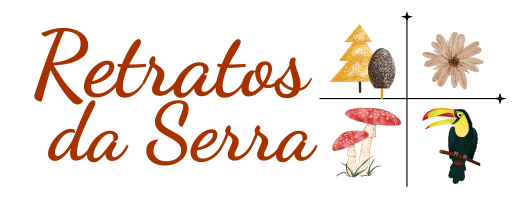Boletinellus rompelii, a beautiful wild edible mushroom, native to the Atlantic forest.
It is a master of camouflage, a hard little mushroom to spot in the forest! Its cap is an earthy brown tone, similar to many dry leaves and the forest soil. The hymenophore (underside) is very yellow with beautiful and large pores when mature, helping to identify this mushroom.
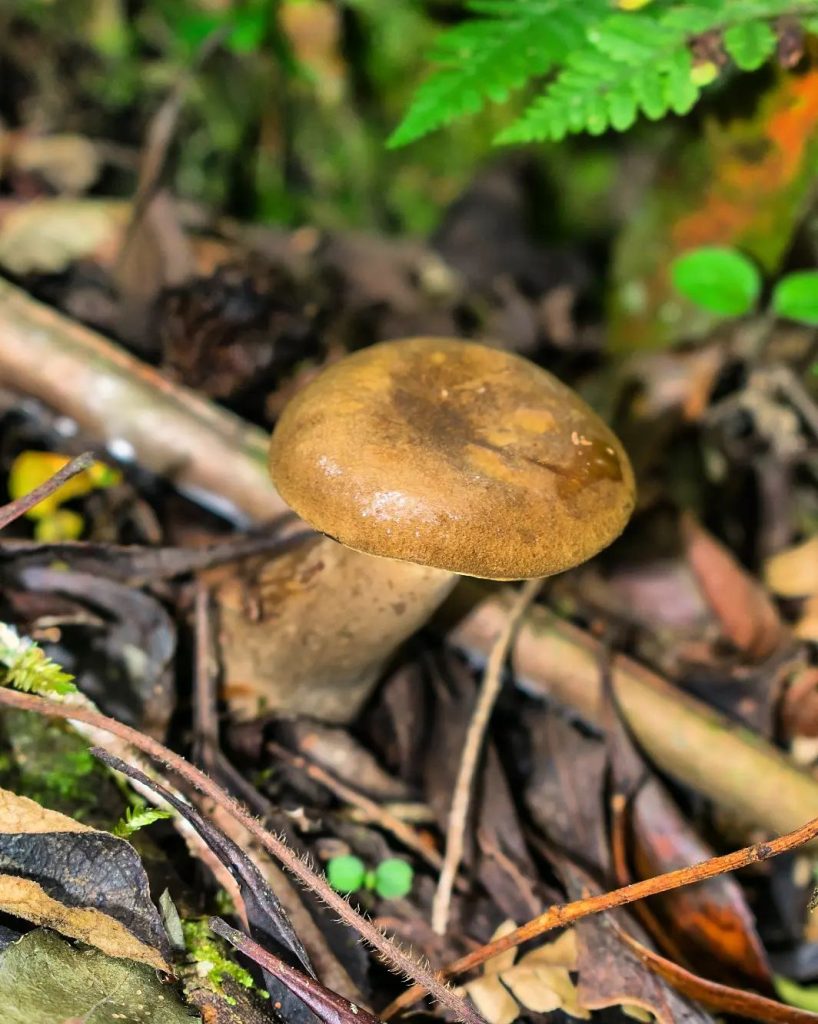
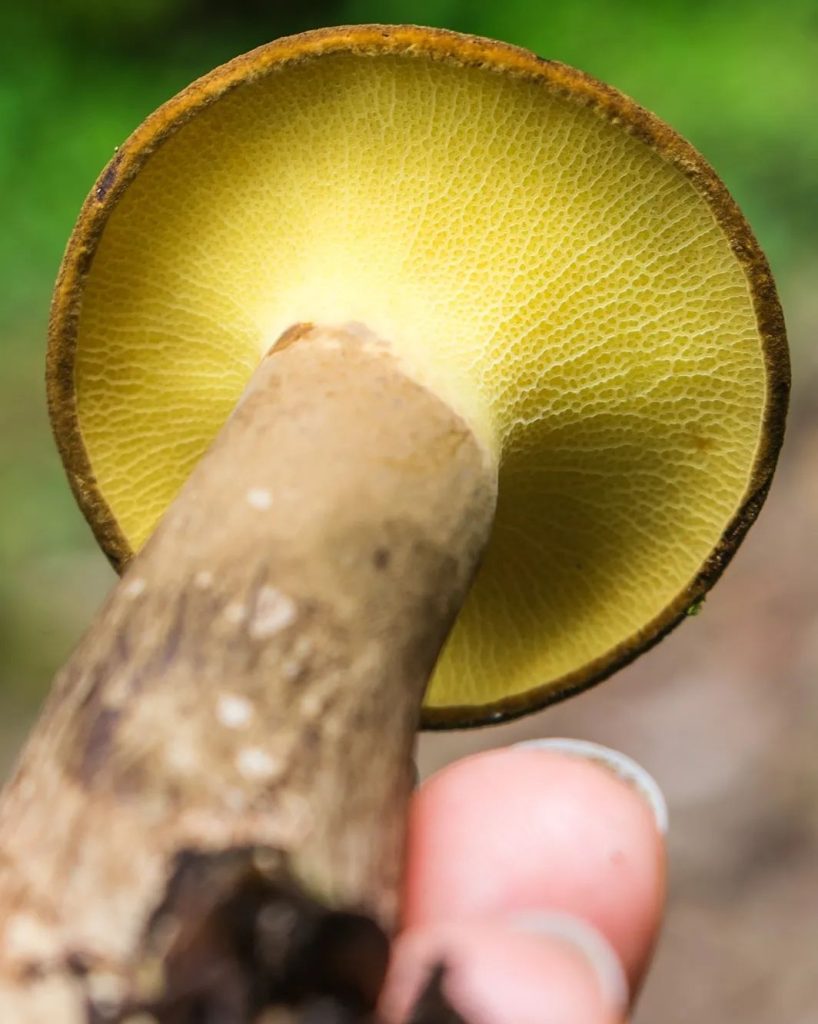

Searching on the internet I found information that it’s a mushroom that occurs from South America to southern Texas, however looking at the observations on iNaturalist it seems to not be a very common species.
Another characteristic this mushrooms is that when touch/injured, it takes on a bluish tone, and there are reports that it generally grows in association with the Allophylus edulis tree, known in Brazil as Chal-chal.
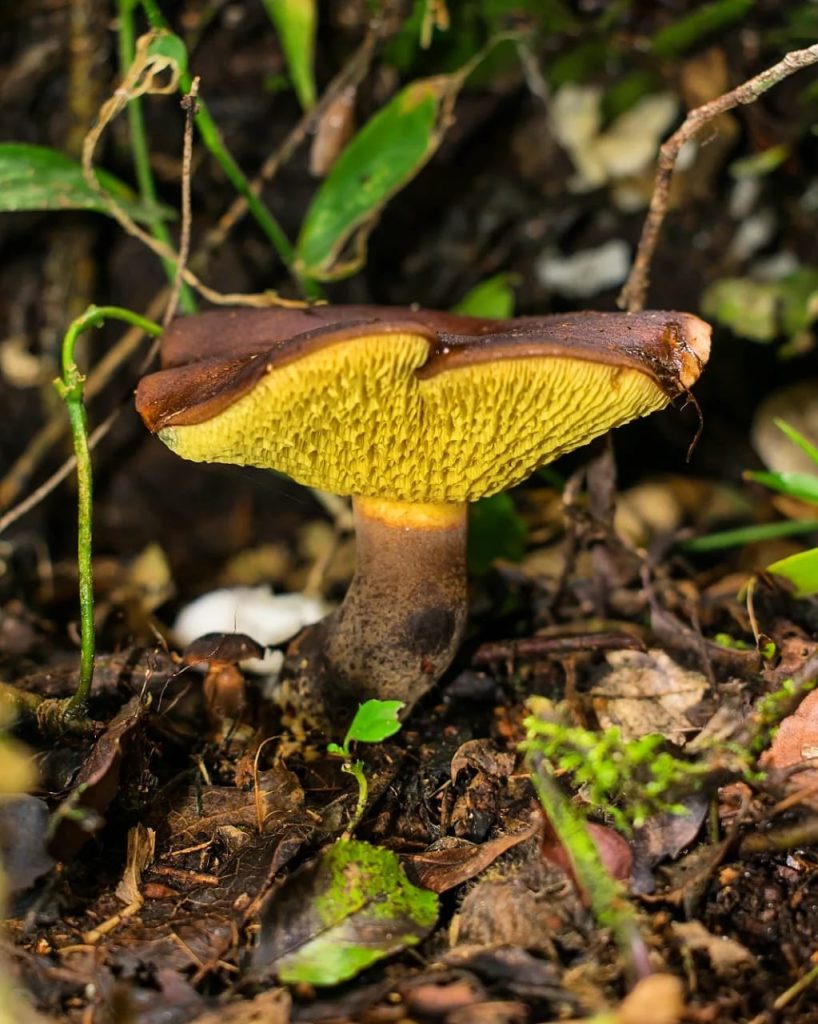
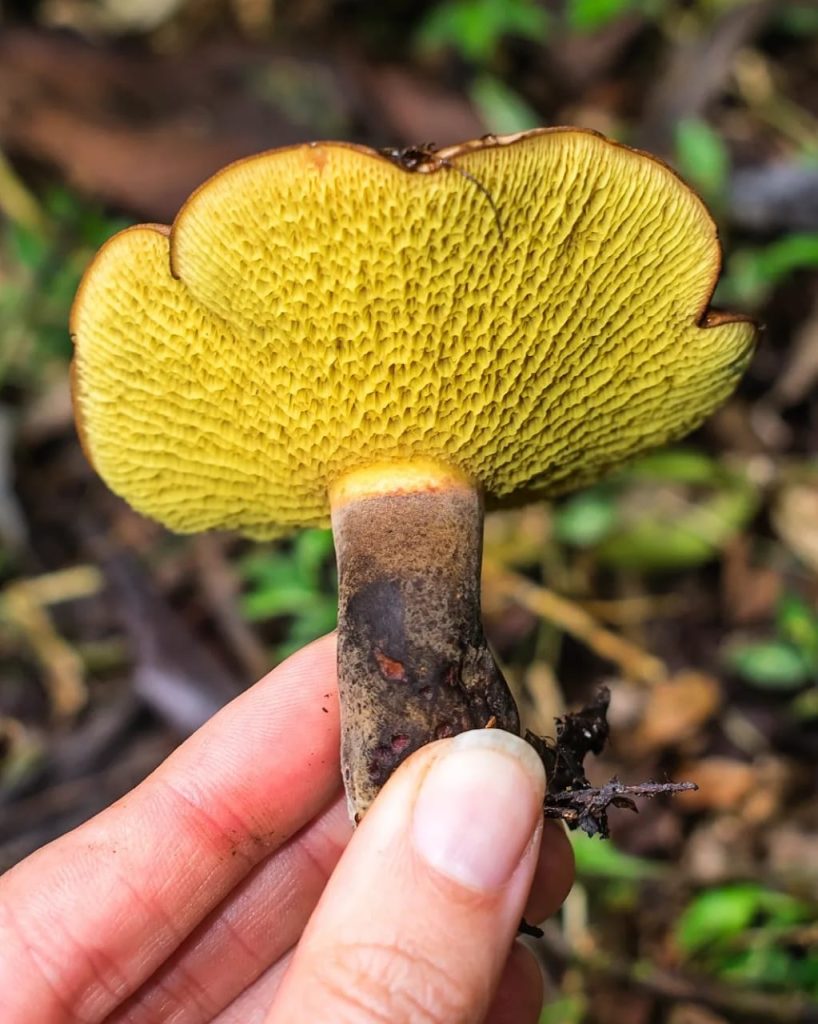
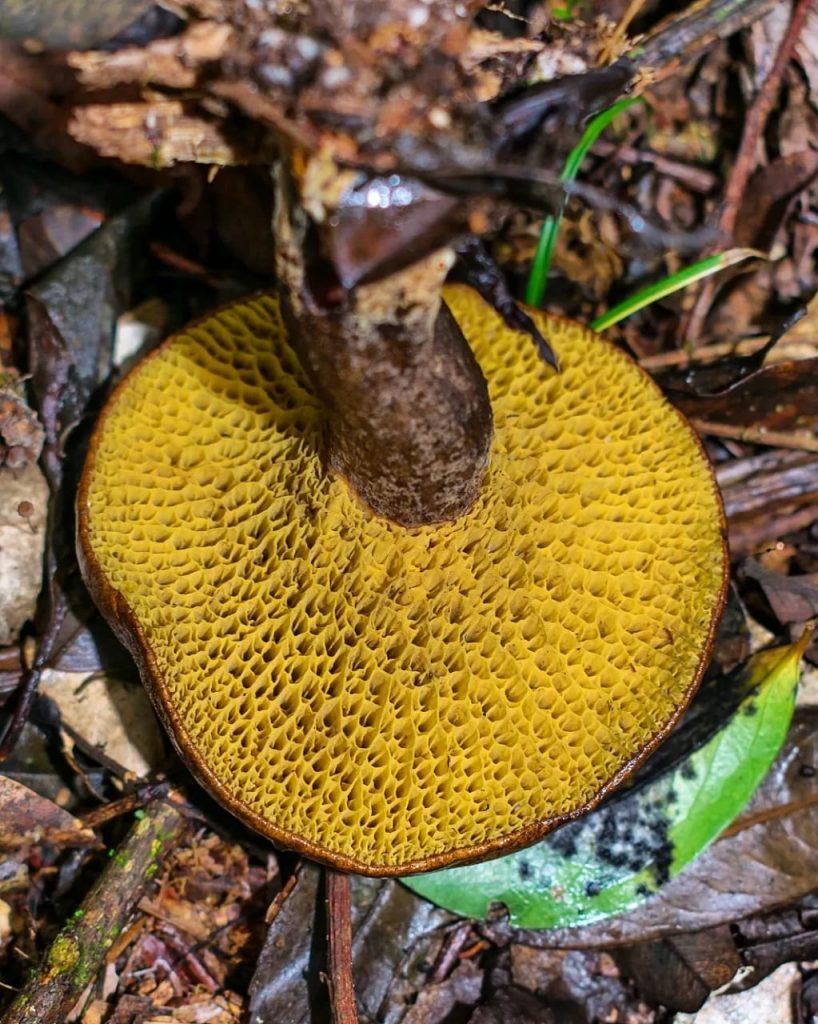
We don’t find them very often around here, but one day in Autumn we were lucky enough to spot 4 in different areas, 3 adults and a baby. One was next to a log full of Pleurotus albidus, I crouched down to take a picture of the log and to collect some Pleurotus and didn’t even see it, my husband saw it almost as we were leaving the area.
We picked 2 to taste. As I mentioned, when it is bruised or cut, it turns bluish and it really doesn’t look very edible, lol. You can see it in the photo below.
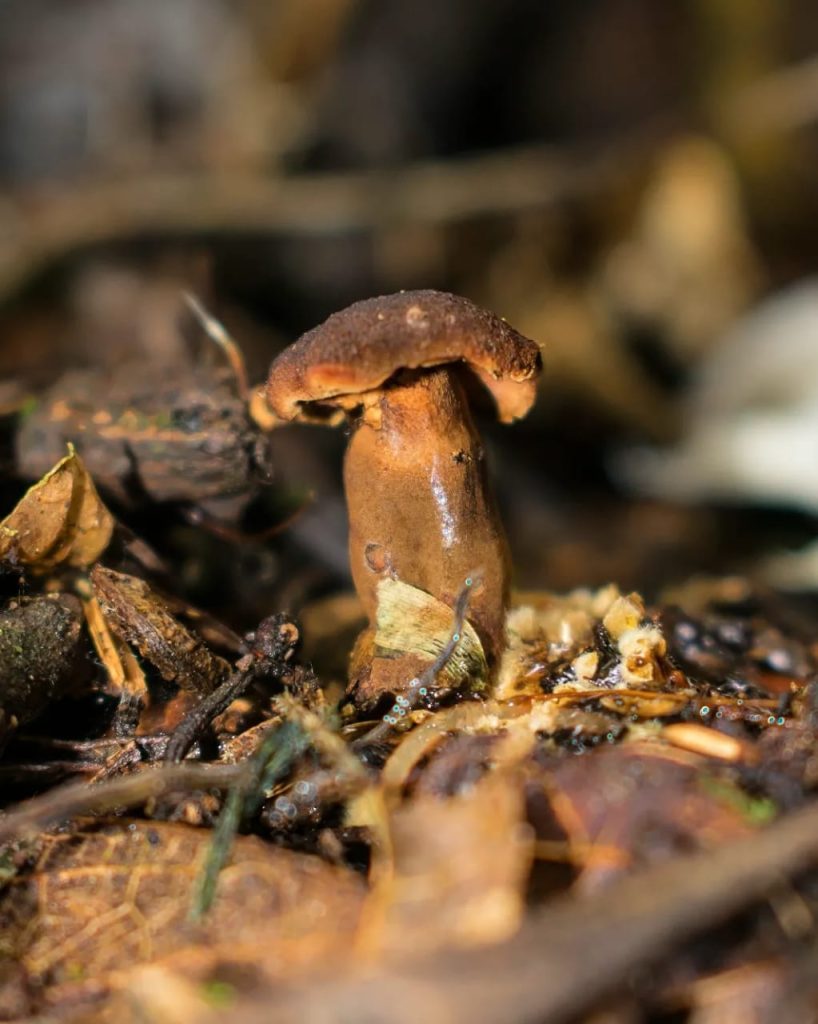
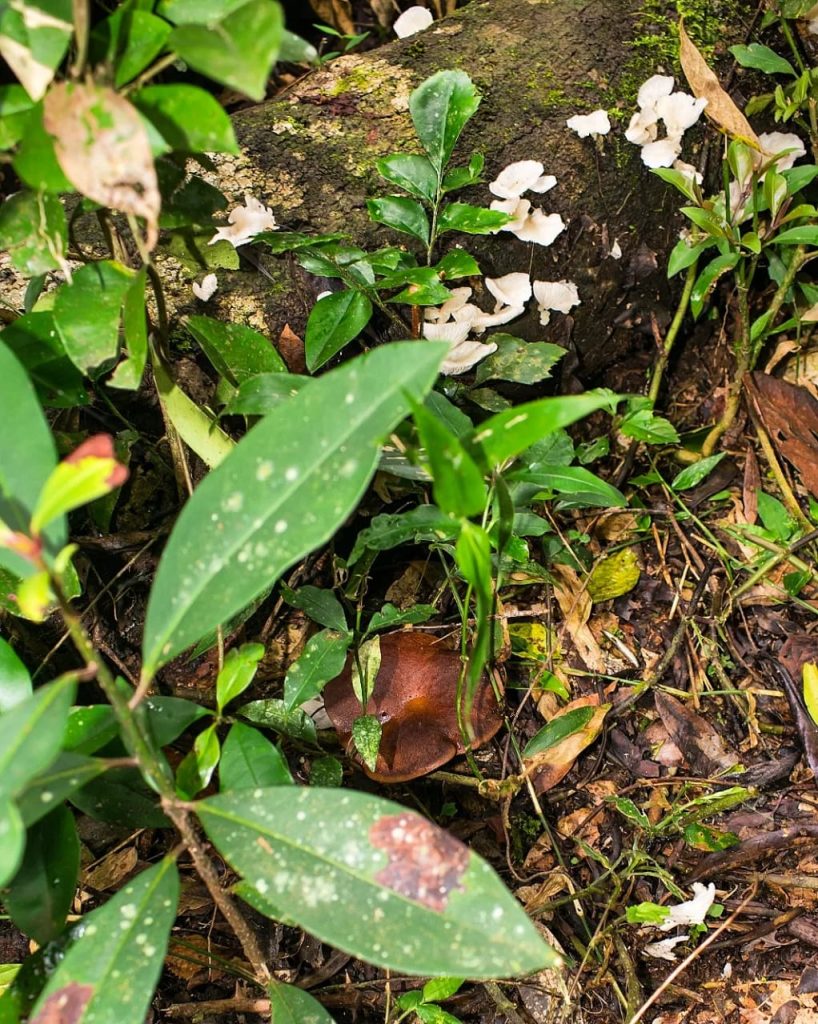
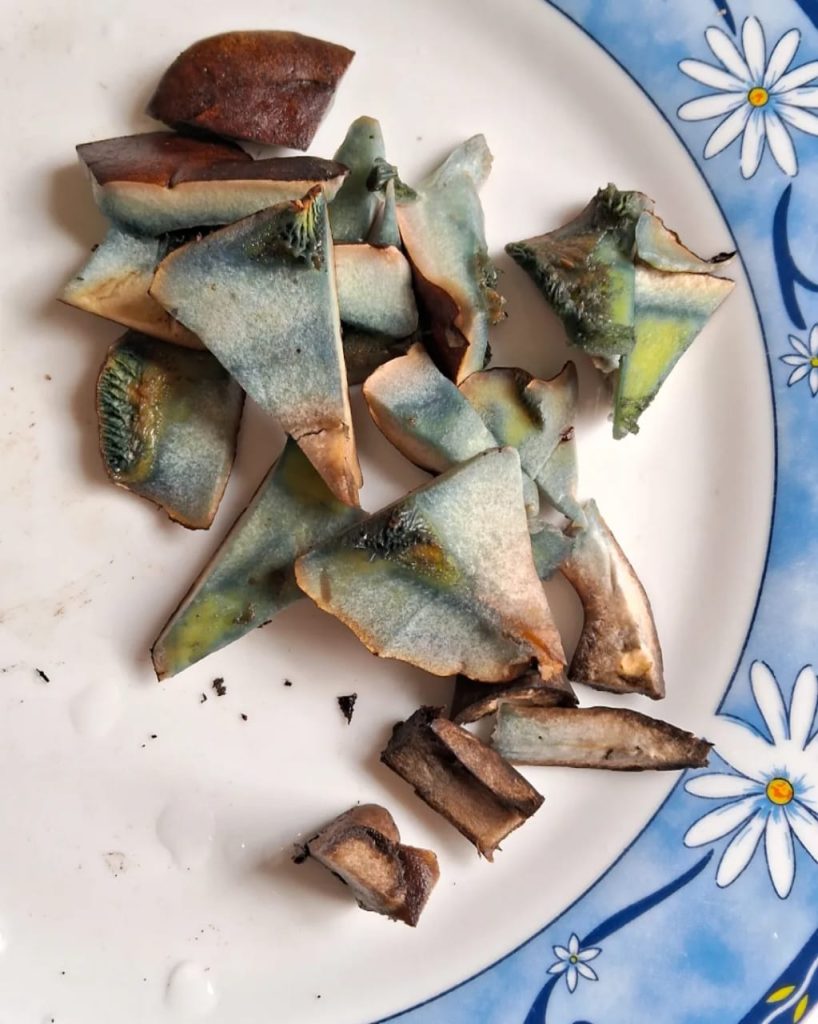
We stir-fried them in a little oil, seasoning them with just a some salt and black pepper, and we tasted them at different “doneness”. At first, I thought the taste was a little unpleasant, too earthy, but as we continued to fry them and they became more golden and firm, they ended up being very tasty. I was pleasantly surprised.
Oh, and we always remove the hymenophore (underside) of this type of mushroom before stir-frying, as it is a part that has a slimier texture that we don’t like. But this is very much up to individual taste.
📸 Pictures made in São Francisco de Paula, Rio Grande do Sul (Serra Gaúcha, South of Brazil).
